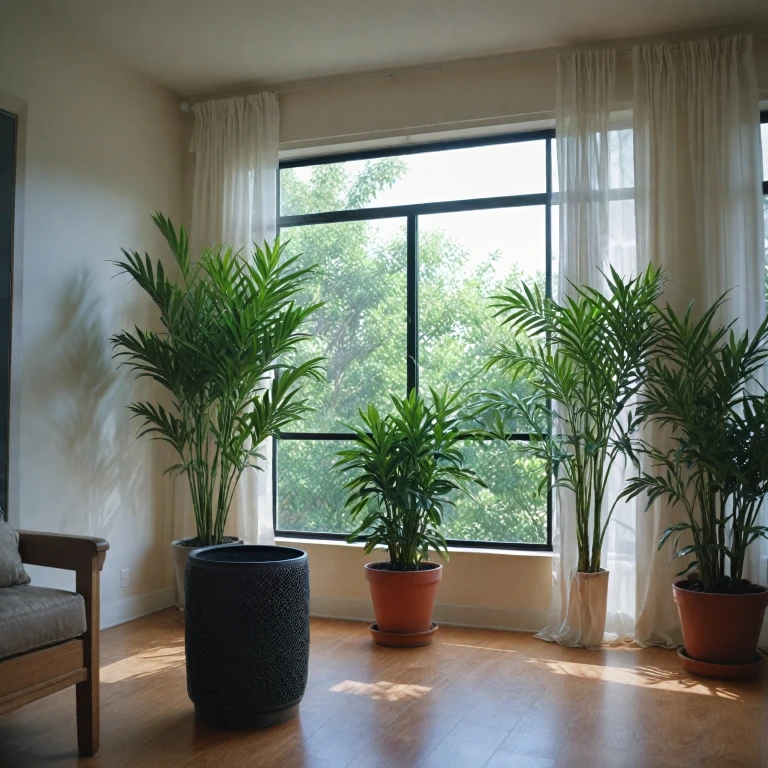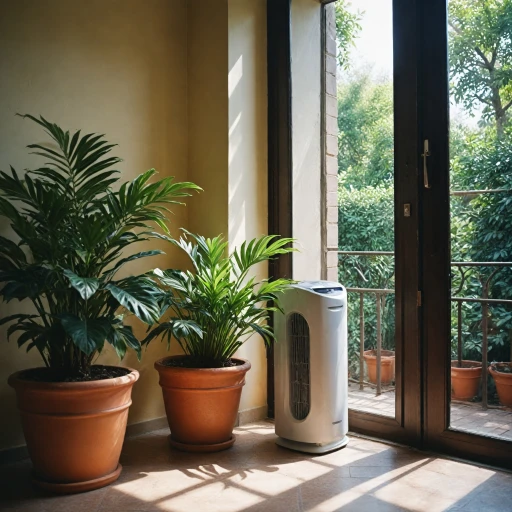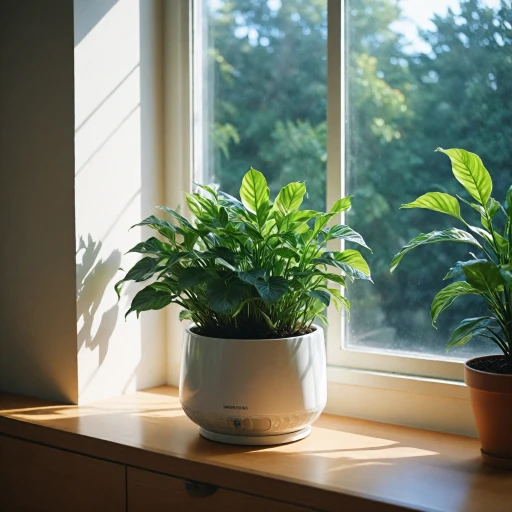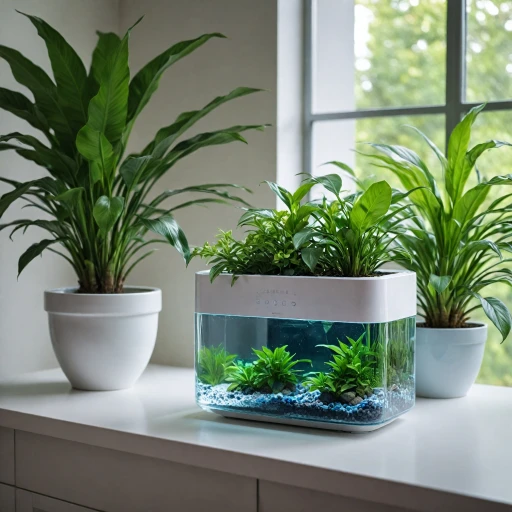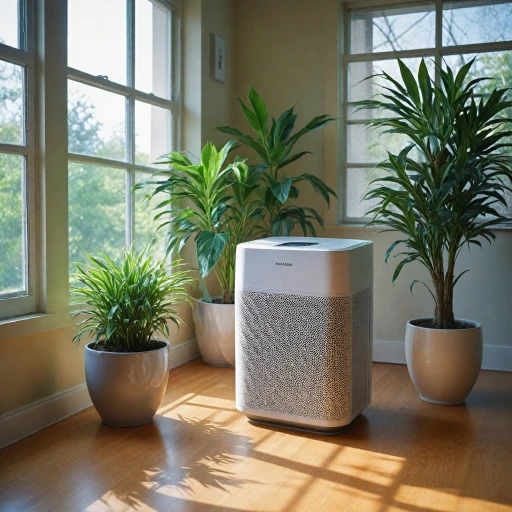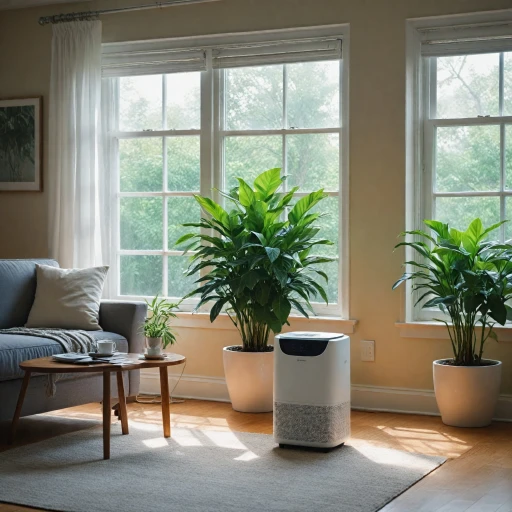
Understanding Activated Carbon
Grasping the Essentials of Activated Carbon
Activated carbon is a term you've likely encountered when exploring air purification technologies. But what makes this material so critical in air purifiers? Put simply, it's a form of carbon that's been processed to have small, low-volume pores that increase the surface area available for adsorption. Unlike ordinary carbon, activated carbon possesses a porous structure, which allows it to effectively capture gases, odors, and volatile organic compounds (VOCs). This characteristic makes it a stalwart option in air filtration—particularly when targeting indoor pollutants and gases. It works alongside other filtration methods like HEPA filters to significantly improve indoor air quality. When discussing carbon filters, it's crucial to understand the role of adsorption in the purification process. Adsorption should not be confused with absorption; while the latter involves a substance being taken up entirely, adsorption involves molecules adhering to a surface. This is particularly effective for handling certain chemicals and organic compounds present in indoor environments. Usage of activated carbon in purifiers is not limited to household air quality issues; it is also employed in industrial air purification to tackle more severe pollution. Given its ability to handle a wide array of contaminants, activated carbon is often combined with HEPA and other filters to enhance purification efficiency, ensuring ozone-free filtration. In air purifiers, activated carbon filters can often be seen as blocks or granules, sometimes even impregnated in sheets that facilitate easy replacement. They typically form a critical line of defense after air has passed through filters like HEPA, capturing lingering odors and VOCs that other filters might miss. Understanding activated carbon's function and benefits can guide you in choosing the right air purifier, ultimately leading to healthier air for your indoor spaces.How Activated Carbon Works in Air Purifiers
The Science Behind Activated Carbon Filtration
Understanding the mechanism of activated carbon in air purifiers is crucial for appreciating its benefits. Activated carbon, renowned for its ability to cleanse the air, operates on a process known as adsorption. This means it can capture gases, including volatile organic compounds (VOCs) and odors, within its porous structure. Activated carbon air filters work efficiently by drawing air through them. As air passes through the carbon-filled filters, numerous small pores within the activated carbon trap and hold foreign particles. This process is particularly effective in removing organic compounds, which often carry unpleasant odors or harmful chemicals that affect indoor air quality. It's vital to mention the utility of activated carbon in dealing with gaseous pollutants. While HEPA filters excel at capturing airborne particles like dust and smoke, they fall short in tackling gases. Activated carbon fills this gap, significantly improving indoor air purification. For those keen to dive deeper into how bulk activated charcoal enhances air purification, consider exploring further resources on this topic. To sum up, the function of activated carbon in air purifiers is both complementary and essential, providing a vital layer of air filtration, ensuring efficient removal of gases and odors.Benefits of Using Activated Carbon in Air Purifiers
Advantages of Activated Carbon Filtration
When integrating activated carbon into air purification systems, the outcome typically results in healthier indoor air quality. These carbon filters are particularly effective in situations where volatile organic compounds (VOCs), odors, and other gases may be present. Bullet points for clarity:- Odor Reduction: Activated carbon efficiently absorbs and neutralizes odors from pets, cooking, and smoke, making it a key element for maintaining a pleasant indoor environment.
- VOC Absorption: Volatile organic compounds, often released from paints, adhesives, and cleaning supplies, are effectively trapped by activated carbon, preventing these harmful chemicals from circulating in homes or offices.
- Improved Air Quality: By targeting and removing gaseous pollutants, carbon filters contribute to better overall air quality, making spaces healthier and more comfortable for inhabitants.
- Silent Operation: Unlike some electronic methods of filtration, activated carbon works silently, ensuring an undisturbed living or working environment.
Comparing Activated Carbon with Other Filtration Methods
Evaluating Air Purification Effectiveness
When assessing the effectiveness of activated carbon in air purifiers, it's important to understand how it compares to other popular filtration methods like HEPA filters. Activated carbon is particularly effective at adsorbing volatile organic compounds (VOCs), odors, and gases. In contrast, HEPA filters excel at capturing particulate matter such as dust, pollen, and smoke. To provide a clearer picture:- HEPA Filters: Ideal for removing fine particles, HEPA air filters are renowned for their ability to trap at least 99.97% of particulates as small as 0.3 microns. They are a solid choice for reducing dust and smoke levels.
- Activated Carbon Filters: These filters are unparalleled in their capability to handle VOCs and odors due to the porous structure that allows for extensive adsorption. They are particularly valuable for improving air quality in environments with high levels of organic compounds and chemical emissions.
- Combination Filters: Many air purifiers now incorporate both HEPA and activated carbon filters, creating a comprehensive air purification system. This combination is often seen in higher-end purifiers because it addresses a broader spectrum of indoor air quality challenges.
Choosing the Right Air Purifier with Activated Carbon
Factors to Consider When Selecting an Air Purifier
Choosing the right air purifier with activated carbon involves understanding several key factors. These elements ensure that the purifier effectively improves indoor air quality by targeting specific pollutants such as volatile organic compounds (VOCs), odors, and smoke.
Size and Capacity
One of the first considerations is the size of the room where the air purifier will be used. The purifier's capacity, often measured in cubic feet per minute (CFM), should match the room size for optimal air filtration. Larger spaces may require purifiers with higher CFM ratings to ensure efficient air purification.
Type of Filters
While activated carbon filters are crucial for adsorbing gases and odors, combining them with HEPA filters can enhance the overall air filtration process. HEPA filters are effective at capturing particulate matter, while carbon filters target gases and chemicals. This combination is particularly beneficial in environments with a mix of pollutants.
Specific Pollutants
Consider the specific pollutants you need to address. If you're dealing with high levels of VOCs or persistent odors, a purifier with a substantial amount of activated carbon, measured in pounds (lbs), will be more effective. Some purifiers, like those from Austin Air, offer models with significant carbon content for enhanced adsorption.
Maintenance and Longevity
Look for air purifiers that offer a long lifespan and come with a year warranty. Regular maintenance, such as replacing carbon filters, is essential to maintain air quality. Check the manufacturer's recommendations for filter replacement to ensure continued efficiency.
Ozone-Free Operation
Ensure that the air purifier operates without producing ozone, a harmful byproduct that can affect indoor air quality. Many modern purifiers are designed to be ozone-free, focusing solely on effective air filtration without introducing additional pollutants.
By considering these factors, you can select an air purifier that not only meets your specific needs but also enhances the overall quality of your indoor environment.
Common Misconceptions About Activated Carbon
Dispelling Myths Around Activated Carbon in Air Purifiers
Activated carbon is a popular component in air purifiers, yet there are several misconceptions about its effectiveness and usage. Let's address some of these common myths to provide a clearer understanding of how activated carbon filters contribute to air purification.
Myth 1: Activated Carbon Filters Are Only for Odors
While it's true that activated carbon is highly effective at removing odors, its capabilities extend far beyond that. These filters are designed to adsorb a wide range of volatile organic compounds (VOCs) and gases, making them an essential part of comprehensive air filtration systems. They work alongside HEPA filters to enhance indoor air quality by trapping harmful chemicals and organic compounds.
Myth 2: All Carbon Filters Are the Same
Not all carbon filters are created equal. The effectiveness of a carbon filter depends on factors like the amount of activated carbon it contains (measured in lbs carbon) and the specific design of the filter. For instance, industrial air purifiers may use bulk activated charcoal to handle higher volumes of air and pollutants. It's crucial to choose a carbon air filter that matches your specific air purification needs.
Myth 3: Activated Carbon Filters Produce Ozone
Some people mistakenly believe that carbon filters produce ozone, a harmful gas. However, activated carbon filters are ozone-free and do not generate ozone during the air filtration process. Instead, they focus on adsorption, capturing pollutants without releasing any harmful byproducts.
Myth 4: Carbon Filters Need Frequent Replacement
While it's important to maintain your air purifier, activated carbon filters are designed to last for a significant period before needing replacement. The lifespan of a carbon filter can vary based on usage and air quality, but many high-quality filters come with a year warranty, ensuring long-term performance.
Understanding these aspects of activated carbon can help you make informed decisions when selecting an air purifier. By dispelling these myths, you can better appreciate the role of activated carbon in enhancing air quality and maintaining a healthy indoor environment.
